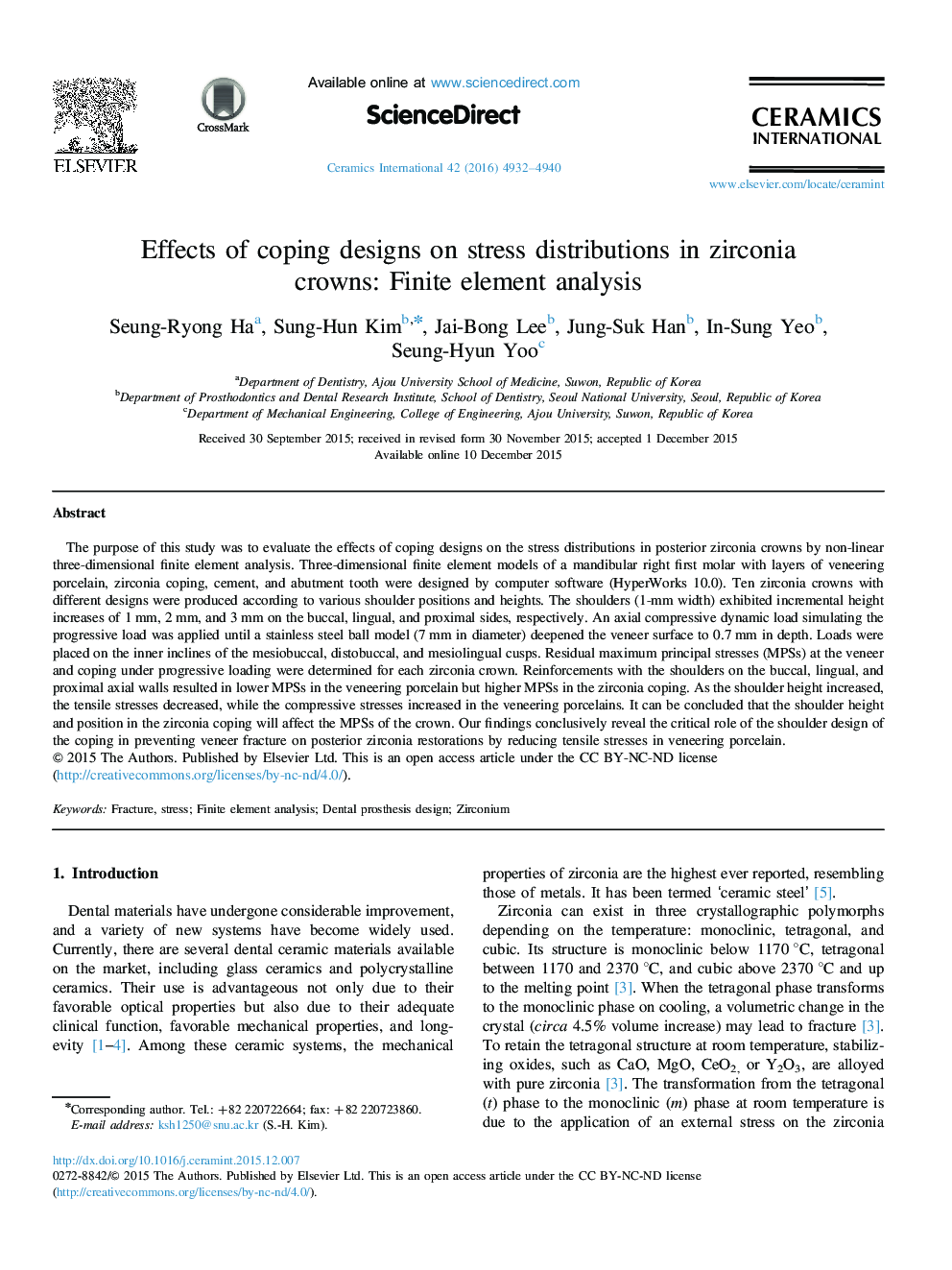| Article ID | Journal | Published Year | Pages | File Type |
|---|---|---|---|---|
| 10624364 | Ceramics International | 2016 | 9 Pages |
Abstract
The purpose of this study was to evaluate the effects of coping designs on the stress distributions in posterior zirconia crowns by non-linear three-dimensional finite element analysis. Three-dimensional finite element models of a mandibular right first molar with layers of veneering porcelain, zirconia coping, cement, and abutment tooth were designed by computer software (HyperWorks 10.0). Ten zirconia crowns with different designs were produced according to various shoulder positions and heights. The shoulders (1-mm width) exhibited incremental height increases of 1Â mm, 2Â mm, and 3Â mm on the buccal, lingual, and proximal sides, respectively. An axial compressive dynamic load simulating the progressive load was applied until a stainless steel ball model (7Â mm in diameter) deepened the veneer surface to 0.7Â mm in depth. Loads were placed on the inner inclines of the mesiobuccal, distobuccal, and mesiolingual cusps. Residual maximum principal stresses (MPSs) at the veneer and coping under progressive loading were determined for each zirconia crown. Reinforcements with the shoulders on the buccal, lingual, and proximal axial walls resulted in lower MPSs in the veneering porcelain but higher MPSs in the zirconia coping. As the shoulder height increased, the tensile stresses decreased, while the compressive stresses increased in the veneering porcelains. It can be concluded that the shoulder height and position in the zirconia coping will affect the MPSs of the crown. Our findings conclusively reveal the critical role of the shoulder design of the coping in preventing veneer fracture on posterior zirconia restorations by reducing tensile stresses in veneering porcelain.
Keywords
Related Topics
Physical Sciences and Engineering
Materials Science
Ceramics and Composites
Authors
Seung-Ryong Ha, Sung-Hun Kim, Jai-Bong Lee, Jung-Suk Han, In-Sung Yeo, Seung-Hyun Yoo,
